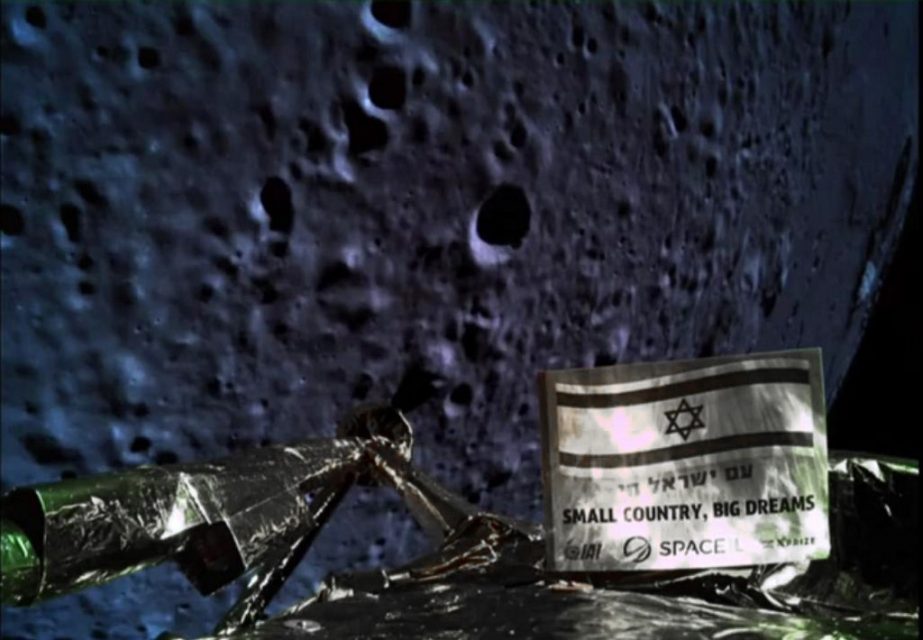
By Agence France Presse
Israel’s attempt at a moon landing failed at the last minute Thursday when the craft suffered an engine failure as it prepared to land and apparently crashed onto the lunar surface.
“We didn’t make it, but we definitely tried,” project originator and major backer Morris Kahn said in a live videocast from mission control near Tel Aviv.
“I think that the achievement of getting to where we got is really tremendous, I think we can be proud,” he said.
During the broadcast control, staff could be heard saying that engines meant to slow the craft’s descent and allow a soft landing had failed and contact with it had been lost.
“If at first you don’t succeed, you try again,” said Prime Minister Benjamin Netanyahu from the control room, where he had been watching along with US Ambassador to Israel David Friedman.
“The spacecraft Beresheet did not successfully complete its landing on the moon,” an onscreen message said.
Prior to that, Israel’s first spacecraft to the moon was expected to make its historic landing there Thursday, with the objective to make the Jewish state the fourth and smallest country to complete the trip.
The landing was originally scheduled for around 10:25 pm (1925 GMT) or 3:25 a.m. Philippine time Friday, April 12.
So far, only Russia, the United States and China have made the 384,000-kilometre (239,000-mile) journey and landed on the Moon.

Israeli NGO SpaceIL and state-owned Israel Aerospace Industries (IAI), the two main partners, describe the project as the “world’s first spacecraft built in a non-governmental mission,” with philanthropist Morris Kahn putting up $40 million of the $100 million budget.
Other partners who joined later come from “the private sector, government and academia,” the IAI website says.
Just before the landing attempt Netanyahu said that he was thinking about initiating a national space project.
“I am seriously considering investing in a space programme,” he said in the webcast.
“It has national implications for Israel and implications for humanity.”
The 585-kilogramme (1,290-pound) Beresheet, which means “Genesis” in Hebrew, is an unmanned spacecraft resembling a tall, oddly shaped table with round fuel tanks under the top.
Although the journey is 384,000 kilometres, Beresheet will travel a total of 6.5 million kilometres due to a series of orbits.
Beresheet was launched from Cape Canaveral in Florida on February 22 with a Falcon 9 rocket from Elon Musk’s private US-based SpaceX company.
Its speed has reached 10 kilometres per second, (36,000 kilometres per hour).
For Israel, the landing itself is the main mission, but the spacecraft also carries on its one-way trip a scientific instrument to measure the lunar magnetic field, which will help understanding of the moon’s formation.
The craft also carried a “time capsule” loaded with digital files containing a Bible, children’s drawings, Israeli songs, memories of a Holocaust survivor and the blue-and-white Israeli flag.
– Google prize –
The project began as part of the Google Lunar XPrize, which in 2010 offered $30 million in awards to encourage scientists and entrepreneurs to come up with relatively low-cost moon missions.
Although the Google prize expired in March without a winner, Israel’s team pledged to push forward.
The project includes other partners, among them the Swedish Space Corporation, whose ground satellite station network provided support.
NASA has made its Deep Space Network available to transmit data and has installed a small laser retroreflector aboard the lander to test its potential as a navigation tool.
Asked in December whether the project had so far gone as planned, SpaceIL co-founder Yariv Bash said “hell no”.
“Back when we got started, we thought it was going to be a two-year project, the budget would be less than $10 million, and the spacecraft will weigh less than five kilogrammes,” he said.
“And here we are eight years later with a project with a budget of almost $100 million.”
The Israeli mission comes amid renewed global interest in the moon, 50 years after American astronauts first walked on its surface.
China’s Chang’e-4 made the first-ever soft landing on the far side of the moon on January 3, after a probe sent by Beijing made a lunar landing elsewhere in 2013.
US President Donald Trump’s administration announced in March it was speeding up plans to send American astronauts back to the moon, bringing forward the target date from 2028 to 2024.
India hopes to become the fifth lunar country in the spring with its Chandrayaan-2 mission. It aims to put a craft with a rover onto the moon’s surface to collect data.
Japan plans to send a small lunar lander, called SLIM, to study a volcanic area around 2020-2021.
The United States remains the only country to have walked on the moon, with 12 astronauts having taken part in six missions between 1969 and 1972.
© Agence France-Presse








